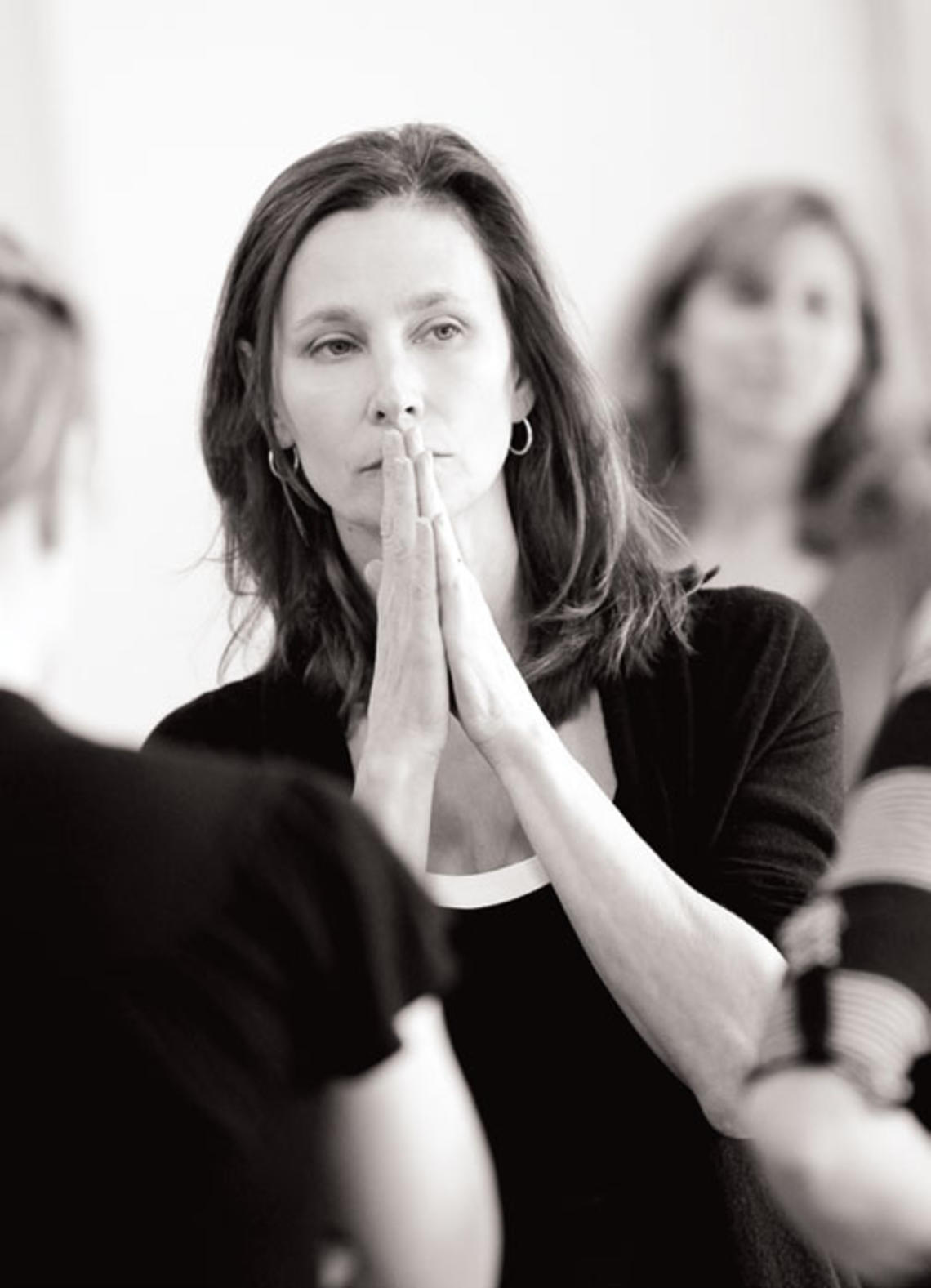
Under the aegis of the Lewis Center for the Arts, our Program in Dance is flourishing—a tribute to the talents of our students and faculty and the inspired leadership of Director and Professor of Dance Susan Marshall. Further afield, Susan Marshall & Company have toured nationally and internationally for the past 25 years, earning acclaim for their original, poetic works. I am delighted to introduce you to her here.—S.M.T.
I first encountered dance at Princeton in 2007, when my company was invited to stage a work on students for the annual Spring Dance Festival. I’d been told that, because Princeton was a liberal arts university, there were no dance majors and rehearsals could take place only in the evenings because of the students’ academic schedules. I arrived prepared to find students with underdeveloped skills and the half-present attitude of the partially committed. What a shock to discover skillful, gifted dancers who were engaged, informed, proactive, and brilliantly present. How could they possibly be anthropology and biology majors devoting only a slice of their curricular time to dance? I n fall 2009, I became the first director of the new Program in Dance, a position made possible through the extraordinary gift of Peter B. Lewis ’55 and the creation of the Lewis Center for the Arts. (Formerly, dance studies fell under the rubric of the Program in Theater and Dance.) Though I am now in my third year at the University, my awe of Princeton students remains undiminished.
Our program’s roots date back to 1969, when Ze’eva Cohen was invited to develop the dance classes it was assumed Princeton’s first women students would crave. It was mostly men who showed up to those first classes, held in a small room attached to Dillon Gymnasium. From these humble beginnings, Cohen steadily advocated over the years for dance to take its place beside the other creative arts as a legitimate area of study, and she intelligently and scrappily built a program grounded in contemporary dance.
Because of President Tilghman’s Arts Initiative, our dance program is now uniquely positioned to innovate. In our culture as a whole, dance has become isolated—a victim of its own, often self-imposed, segregation in conservatories as well as its tendency toward genre snobbery. As a result, it plays to devoted but small audiences. If our first experiences with dance were more catholic and less partitioned, we might find easier access and avenues through which dance could become part of our lives.
To this end, here at Princeton we have begun to offer interdisciplinary courses centered on dance collaborations with theater artists, visual artists, composers, and engineers. We have increased the number and variety of introductory courses. For students whose dance interests differ from our core focus on modern dance, we are creating more points of entry: ballet, improvisational techniques, somatic approaches, African dance, musical theater choreography, theory and history seminars, and traditional techniques from diverse world cultures.
We intend our courses to serve both the complete newcomer and the pre-professional. One of those newcomers was Silas Riener ’06, who discovered dance as a Princeton freshman and went on to dance with Merce Cunningham Dance Company. Silas was recently hailed by The New York Times as “one of the superlative performers of our day.” While it is the rare student who begins dancing at Princeton and ends up with a skyrocketing professional career, many do find careers in dance and, while still in school, discover interesting connections with their majors that lead to innovative, danceinfused theses. Still others develop a lifelong involvement with dance as audience members or practitioners.
In these hard times, financial support for dance is drying up, and our program at Princeton can play an important role by commissioning new work from guest choreographers at the forefront of our field and by initiating modest artistin- residence programs. Already our students are extending their relationships with professionals they’ve worked with on campus by partnering with them in the field. Two examples: this past year Katy Dammers ’13 was Mark Morris’s research assistant on a new work, and Lisa Einstein ’13 performed in Camille A. Brown’s New York season at the Joyce Theater.
Our community of dancers at Princeton is growing. Enrollment has doubled in the past four years, and countless other students dance in thesis projects, guest artist works, co-curricular classes, and student companies. Dance gives students a place on campus to solve problems physically; to move and act consciously. Students can feel, as well as observe and understand, the rightness or wrongness of a choice. Of her first experience with our program, Pallavi Mishra ’15 wrote: “I realized that if dancing through my daily life were to be a goal of mine, it would mean something more than taking study breaks to leap and spin around my room. It would mean incorporating into my approach to life the things I find beautiful and compelling about the approach of dance to movement and expression. Choosing difficult things and doing them with grace, making them look effortless. Following through with actions instead of letting their consequences fall into place by chance—landing my figurative leaps and turns. Being aware of spaces and how I fill them, doing it with intention.”
In a word, our students are simply awe-inspiring.










0 Responses